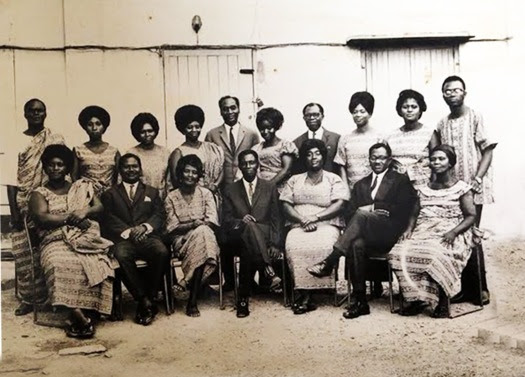
Preserving the past to inspire the future - Everyoung-JamestownBritishAccra
Story posted: 1. August 2014 by Ade Sawyerr
ncreasingly I get excited when I see an old picture of myself at a much younger age; i am even more excited if the photograph is or a relative or relatives taken before i was born and this is not just related to the fact that I am getting on in years myself. I was fortunate to have met great grandfather, Thomas Barber, at his Kotokoraba Road house in Cape Coast where during my primary school days I spent many a holiday. As for my grandmother, Lucy Omolara Barber the joyous moments were several since I carried food to her at Korle Wokon after my lunch break, lived with her at Bawaleshie during some of my holidays and in my secondary school days preferred her company at Lagos Town than having to travel all the way to Akyerensua where my father lived..
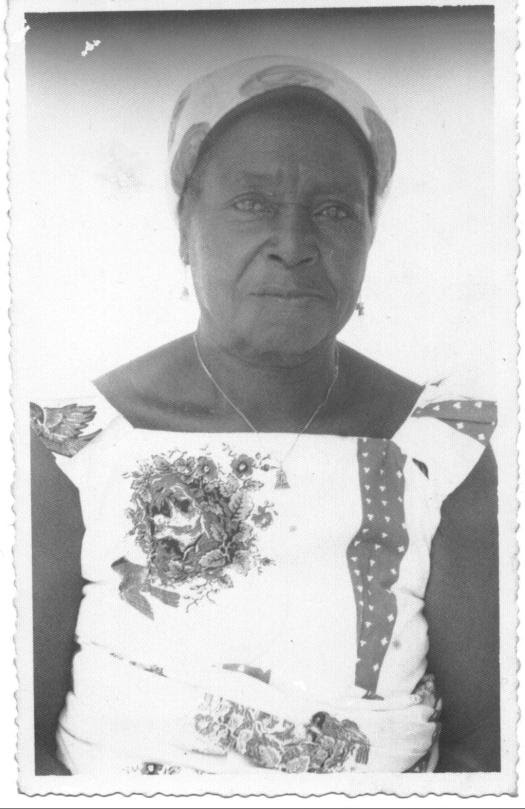
I probably spent more time with her than my own mum because she lived with us till i left to come to England. I never saw a photograph of her mother, Diana Cole, who I am told died when she was quite a young girl, but i chanced on a photograph of her mother Naa Odua Sanniez who gave me my Teshie roots some time ago and would need to get my cousins to cut me another copy since i cannot find my copy.
I was born after my grandfather Akilagpa Sawyerr passed on but do have some treasured photographs of him but sadly have no photographs of his mother Naa Kwarley Quartey of Owooman, Faase. The closest i have been of any image of her was from my late cousin, Jeillo Clottey, nee Edwards who surprised me one day at a function in london by telling me that her Kente shawl was a heirloom given to her grandmother to take back to Sierra Leone which she had inherited. Sadly I never met JW Sawyerr, the merchant prince from Sierra Leone, after whom I got my Jacob Williamson. I wish there are some pictures out somewhere for me to appreciate what they looked like.
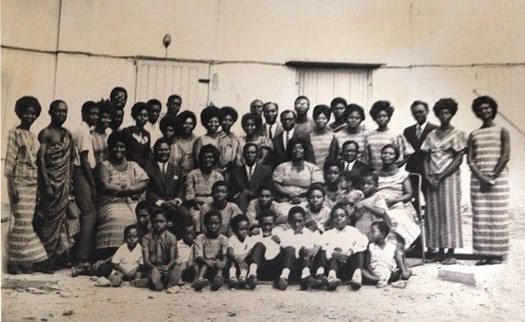
I draw a blank from my Mould side from James Town. Though I lived there as a young boy and the house still stands, i never got to meet any of my grandparents, William Jacob Mould or his wife Mary Vanderpuije. I wish that there are still some photographs of them and that my older cousins may have some that can be preserved now that all 11 of the Mould sisters and brothers have passed to eternity.
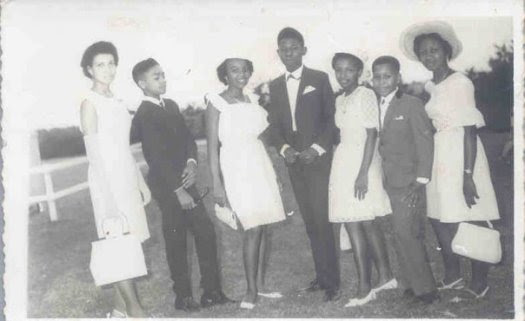
I mention them because I want to talk about an exciting project that I am involved in – “Everyoungjba”. In 1998, as Chairman of Ghana Union London, we organised a grand durbar at Islington Fields as part of the celebrations of the Windrush festival commemorating 50 years of the West Indian mass immigration to the UK. About a month later, I met an ‘everyoung’ man who was just short of 70 years at the time, at a community church service who informed me that he had a picture for me taken at the durbar. I arranged and met him at my offices in Brixton and he came along with the printed picture, some albums and a carrier bag full of negatives.
Little did i realise that my life was about to change then!
He had nursed and nurtured a musical group in Ghana called FɛɛHi – ‘It is all good’ in the Ga language and wanted to discuss ways of bringing them over to the UK since quite a lot of his protégés had found their way here to play with different groups. I asked him to forget it! I told him to concentrate on his life here and not to further complicate it with management of a musical group.
He persisted in trying to talk the benefits of the group up. I had wanted to tell him that was the end of the conversation, but Mr Barnor had grey hairs and it was quite difficult to shut him up so i buried myself in carrier bag looking at the negatives whilst he continued with his spiel promoting the virtues of FɛɛHi. My mind had gone back to my experiences of arranging to get the then most popular band in Ghana, Boombaya into the UK in 1974 and how they eventually disintegrated within a short space of time.
When i looked up it was to tell him that his negatives were more important than the torture involved in managing any musical group and that i had had my fill of ‘joobilɔi – musicians and dancers – talented but prima donnas all of them and massaging their ego was not really worth it unless they were bringing in a lot of money to compensate for the pain of trying to shepherd them. I was hooked on the negatives – they spanned a life time – our independence, and though there were many places depicted in the negatives, it was clear that the people were of some significance, culturally, historically and politically.
So I asked Mr Barnor what he was doing with all these negatives and he told me that there was more and invited me to come visit him in the sheltered accommodation. So one Sunday after church, I went out there with my wife and son and my God, there were carrier bags upon carrier bags in the sitting room, under the sofa, under the table and all over the place. I asked, “why are they not catalogued and what are we to do with these?” Well he had been trying to scan them slowly in order to catalogue them was his response. Now I knew that if Mr Barnor has been taking photographs from before independence, it would take a long time to bring these to life again. I knew that even though he was an expert with the camera and could charm all the glamorous ladies whose photographs he took for Drum magazine to show a little bit of leg or expose just a tiny bit more of their cleavage, he was not going to be able to do much justice to bringing all these to life again on his own and this was despite of his recently acquired knowledge of Photoshop and his possession of a small scanning device.
When I left Mr Barnor, I called my colleague, Allotey Bruce Konuah and told him that we had a “job” on hand. This was real, this was live! This was Jamestown! This was Bruce Road; from the Crabbe’s House to Konuah and beyond, past Agbado and Bineyville to right to the top of Bruce Road at Adedainkpo at the house of the two lions. I also said that it was urgent but might take a few years of his time for us to actualise.
So Allotey Bruce-Konuah went and saw Mr Barnor at Danehurst in Brentford and decided that the scanner should be brought to Equinox Consulting at 467 Brixton Road, along with some of the negatives and he got to work scanning some of the stuff. There were gems of stuff, Danquah with Paa Willie, Nkrumah with Dzenkle Dzewu, Sir Charles Emmanuel Quist, Professor Easmon, my late sister presenting the bouquet to the Duchess of Kent and J. Ade Sawyerr himself and Araba Sophia being introduced to the Duchess of Kent were some of those pictures of independence that were in the pile. There were others, the late Nii Amugi, the late General Ankrah and several other people of note who made history in Ghana.

Allotey suggested that the scanning was going to be slow, we did not have the resources neither were we going to be able to take this far and I could not quite give up my day job to pursue what was essentially a passion so Allotey took the stuff to Photofusion in Brixton where he had worked as a photodesigner. They could not help immediately because most of the photographs were not about the UK.
And through all this period, i woke up every morning to a picture sent from Mr Barnor; my son always alerted me when has was on the computer – Oh! You have got ‘a picture for you’ and even till today several years on Mr Barnor still sends me ‘a picture for you’ when i have not heard from him for a while. Allotey’s friend Nana then took Mr Barnor to the Black Cultural Archives, which incidentally was opened on the 24th of July 2014 after more than 30 years in gestation and at the opening one could see all the ‘respect’ that Mr Barnor got on that day!

At the BCA, they met with a young lady in the arts, Nana Ofori-Atta Ayim who got the BCA to organise a photographic exhibition of Mr Barnor’s work for the Ghana@50 celebrations in the UK. This fantastic lady had the foresight to recognise that what we had was bigger than the Black Cultural Archives, a book was required so she painstakingly went through some of the pictures and came up with a concept for an African book on photography and armed with the manuscript she took Mr Barnor the a funded organisation, the Association of Black Photographers who had received heritage funding to some work with photographs depicting life of black people in the UK and this led to a exhibition of Mr Barnor’s work. Nana Ayim, we are still waiting for the book.
Through these past 14 years,I have provided support to Mr Barnor with 3 exhibitions; celebrating his 75th, 80th and 85th birthdays and listened through a lot of talk about photgraphhic exhibitions that he has been called upon to present – in America, South Africa, France and several other places in the UK – i can ‘blag’ my way into talking the ‘esoterics’ of photography and even ‘pose’ as a very cultured person pontificating of the value of photographs and pictures.
But Allotey’s everyoungjba though inspired by our association with Mr Barnor is even more refreshing, the concept is brilliant and right for our times especially this digital globalised age.
Growing up and coming of age in the 60s Ghana, most homes had an album and when people visited their conversation piece was always around the album. ‘Oh your father looks so handsome’ and ‘what a beauty your mum is’ ‘you look so much like your aunt’, and ‘your grandfather and so on and so forth ‘and ‘oh, I did not know this guy or lady was related to you’. I suppose that these days the photos are instant and your phone ‘cuts’ and keeps them and you do not know where it is stored. Which is why looking for a professional photographer in the UK recently to cover an event was very difficult.
But in those days we had photographers of note – Deo Gratis, Everyoung, Mr Dodoo, Modern Photo, Mr Pobee at Tip Toe, Miss Abbam and several others. I remember having been marched straight from church in our best clothes to the photographer for a family photograph. I still have a few of those from those days around, one from Deo Gratis with my parents and another taken in 1953 by Mr James Barnor of ‘Everyoung’

During our secondary school and university days we had ‘People’ – he worked as a porter at Akuafo Hall Legon but did such a roaring trade taking photographs of people in their Sunday best around secondary schools in the area – Achimota, Accra Girls, St Johns, Presec and others.
In those days part of the art of knowing that the young lady you were chatting up had ‘tombe’ or fallen included being sent photographs of her in her Sunday best and if you were a mail boy in your house you knew who had been sent a ‘do not kuaŋ’ or ‘do not bend’ letter, the one that is kept under the pillow and showed to all, but then again these days no one keeps photographs of families in the wallet to show, it is all preserved on the phone.

What everyoungjba is trying to do is to provide an opportunity for the preservation of our heritage – old photographs that still have the ‘wow effect’ and there have been several in these days of instantgram and twitter and whatsup as when my cousin Alice sent me a whatup of me in the seventies with all my then remaining aunts and uncles, or when I saw a photograph of the Bannerman brothers in Glasgow walking with such swagger in the late 30’s or Kwame Nkrumah being offered a drink from the putuwa after libation had been poured by the Nai wulomo for his safe return after a trip abroad.
So Mr Allotey Bruce -Konuah of ‘everyoungjba’ has been inspired by the journey we took with Mr James Afflah Barnor and with some basic funding from the Ghana Danish Cultural Fund has started actualise what the three of us had discussed had discussed at Equinox Consulting in Brixton several years ago – the archiving of our past in a simple but multipronged way. Suddenly it is possible to build the archive of Mr Barnor’s photographs and think about how the negatives will find a fitting home in Ghana at a resurrected and rehabilitated ‘Everyoung’ in St Edmonds Road JamesTown British Accra! Of course the start is to get all old photographers of a gone by period to bring their negatives for archiving – these will be scanned and catalogued into an archive in the cloud.
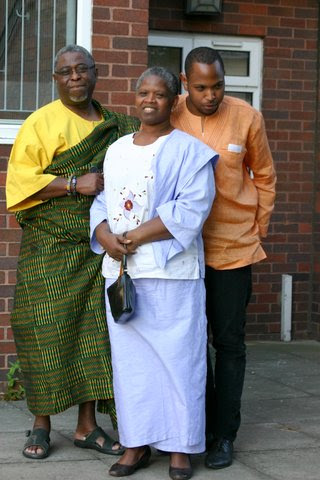
There key is to showcase them to the world and to use the modern technology to help discover our past. The words of my friend and African internet pioneer, Nii Narku Quaynor has always resounded with me. He says that bringing the internet to Africa is just one part of the story – the other half will be for us to build content and make it a powerful tool for us in Africa, our own images taken by us and shared by us and there is so much around us and so much to share. Everyoungjba is starting with offering all old photographers an opportunity to bring the pictures for archiving and displaying on the net and of course to seek the right collaborations in preserving their old negatives. The next stage would be to convince all the grand families of the past to bring us their negatives and old photographs for scanning and preservation too and then we will move on to dealing with existing photographers who want to sell their photographs online-creating one huge picture archive of our past to go into the future.
This will be of interest to genealogists, I am sure my good friend Audrey Naa Amuah Quaye who writes intelligently of the old families of the past and documents snippets of our exciting life of old will be interested in this project as will several others who are interested in using new technology to recreate our past so that it would inspire our future! I told you that my life has changed for the better! – here am i writing about photographs and archives instead of about enterprise strategies, employment initiatives and community development!
Three cheers for
Ghana and the internet
James town British Accra
everyoungjba
Comments: 1 Viewed: 3227
Categories
- Parent 1
- Child 1 of Parent 1
- Child 2 of Parent 1
- Parent 2
- Child 1 of Parent 2
- Child 1 of Child 1 of Parent 2
- Child 2 of Parent 2
Links
- Preserving the past to inspire the future - Everyoung-JamestownBritishAccra
- Everyoung Jamestown British Accra
- Millions of historic images posted to Flickr
News Archive
Subscribe to the RSS news feed
